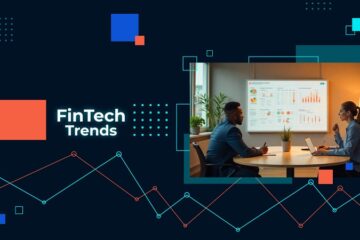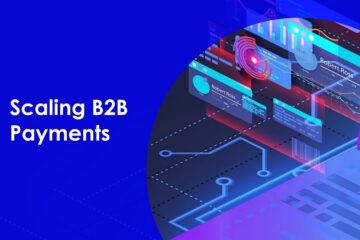A Financial Super App offers a comprehensive suite of financial services under one digital platform, integrating banking, payments, lending, insurance, investments, and more. By serving as a one-stop-shop for users’ financial needs, a financial super app promotes convenience, seamless user experience, and enhanced financial inclusion.
With the rapid growth and evolution of financial technologies, super app now becoming central force to build a digital economy. Fintech already created huge disruption in financial service experience. And with the rise of open banking APIs, financial services become a visible reality now. A super app is ultimate outcomes of the opening banking and fintech revolution. If we look into the global growth pattern of fintech the legitimacy of supper app evolution become more visible than never before.

The Journey Toward Super App
The digital economy is evolving rapidly, driven by advancements in technology, changing consumer behaviors, and the integration of services across platforms. One of the most significant developments in this landscape is the rise of super apps—all-in-one platforms that integrate various services, such as payments, shopping, transportation, social networking, and more, within a single interface.
Super apps have transformed the way people engage with digital services and are becoming essential infrastructure for the digital economy, particularly in regions like Southeast Asia, China, and India. There are multiple cases of supper app available to consider it as a evolution phase of the same. The major supper app examples are as but not limited to the below –

To understand the journey toward supper app is mostly characterized by the phases of human lifecycle journey. The need for specific financial service evolves as the human life progress in the cycle. Each phase of human lifecycle demands specific financial service need. A financial supper app, to be effective essentially address all the needs in a single app. A typical human lifecycle journey can be illustrated as below –

It is to be mention that, the financial need is last activity of a particular task associated with human life. For example, you need a payment instrument only after you go through all the steps of a purchase from information collection and purchase decision making. Once you make the purchase decision, you need financial service to complete the cart. Here comes the need for a payment instrument and/or credit facility like loan or BNPL. Understand human lifecycle is essential, because the supper app must address all the functional touch points of the purchase decision making.
A financial super app must be capable of but not limited to the following’s services –
| SL | Particulars | Description |
| 01 | Social Platform | Should have a messaging platform to chat, share, and interact with other users. |
| 02 | E-Commerce Services | A thriving e-commerce service is a must-have feature of any super app. |
| 03 | Transportation Services | Getting from one location to another, typically involves the use of ride-hailing services. |
| 04 | Financial Services | From online transfers to financial payments, a banking feature is essential for a super app. |
| 05 | Food Delivery | Super apps should include meal delivery and online grocery shopping functionality. |
| 06 | Bill and Utility Payment | engagement in super apps is the ability to pay all of your bills in one place. |
| 07 | Health & Insurance Services | Users can easily access health and insurance features in super apps |
Business Model Canvas of Financial Supper App
The business model canvas is an idle solution to understand a business development process. The canvas business model comprises of 9 building blocks, which represents a set of components essential for a business. The canvas business model also applicable for supper app. The block components may vary depending on the country and economic activities. The overall financial super app business model canvas can be illustrated s bel0w –

Block 1: Customer Segments
- Retail Customers: Individuals who use the app for banking, payments, investments, insurance, and personal finance management.
- Small and Medium-Sized Enterprises (SMEs): Businesses that use the app for payroll, digital banking, loans, and payments.
- Unbanked and Underbanked Population: Individuals who lack access to traditional financial services and rely on mobile financial services.
- Investors and High-Net-Worth Individuals (HNWIs): Users looking for wealth management, investment opportunities, and portfolio tracking.
- Merchants and Service Providers: Businesses that use the app’s payment gateway for in-store and online transactions.
Block 2: Value Propositions
- Comprehensive Financial Services: A wide range of financial products, including digital banking, payments, insurance, loans, and investment tools, all in one platform.
- Convenience and Ease of Use: Users can manage all their financial activities seamlessly through a single app with an intuitive interface.
- Financial Inclusion: Offering services to unbanked and underbanked populations, providing them with access to banking, credit, and savings.
- Personalized Financial Insights: AI-driven tools to offer personalized financial advice, spending analysis, and savings plans based on users’ financial behavior.
- Fast and Secure Transactions: Instant payments, transfers, and transactions supported by cutting-edge encryption and security measures.
- Loyalty and Rewards: Users can earn cashback, discounts, and rewards for using various services on the app, incentivizing frequent use.
Block 3: Channels
- Mobile App: The primary channel through which users access the financial services—available on both Android and iOS platforms.
- Website: A complementary platform for web-based users to access financial services, investments, and customer support.
- Partnerships: Through integrations with third-party apps, financial institutions, telecom companies, and e-commerce platforms to extend the app’s reach.
- Social Media: Using social media platforms to engage with users, offer support, and provide financial literacy content.
- Customer Service Channels: Including chatbots, in-app support, email, and phone support to provide real-time assistance.
Block 4: Customer Relationships
- Automated Customer Service: AI-driven chatbots and virtual assistants offer real-time support, financial advice, and problem resolution.
- Personalized Financial Management: Tailored recommendations for savings, loans, and investments based on users’ financial behavior and goals.
- Community Engagement: Regular updates, newsletters, and social media engagement to maintain strong connections with users.
- Loyalty Programs: Offering exclusive discounts, rewards, and cashback for frequent users, creating long-term engagement.
- User Education: Providing financial literacy tools and resources to help users understand and manage their finances effectively.
Block 5: Revenue Streams
- Transaction Fees: Charging a small percentage of fees on payment transfers, P2P transfers, bill payments, and merchant transactions.
- Lending and Credit Services: Revenue from personal loans, SME loans, and credit products, including interest and loan processing fees.
- Subscription Models: Offering premium services such as advanced financial tools, higher loan limits, or exclusive investment options for a subscription fee.
- Investment and Wealth Management: Earning fees through investment management, brokerage services, and wealth advisory.
- Insurance Commissions: Earning commissions from selling insurance products such as life, health, and auto insurance through the platform.
- Merchant Services: Charging fees to merchants for providing payment gateway solutions, loyalty programs, and analytics tools.
- Data Monetization: Offering anonymized data insights to financial institutions, insurance companies, or retailers, while maintaining data privacy and security.
- Partnership Fees: Revenue from partnerships with banks, financial service providers, or third-party apps integrated into the platform.
Block 6: Key Resources
- Mobile App Platform: The digital infrastructure enabling all financial services, supported by cloud computing, APIs, and scalable databases.
- Technology Infrastructure: AI, machine learning, and blockchain technology for seamless transactions, risk assessment, and fraud detection.
- Financial Licenses: Necessary banking, lending, and insurance licenses to legally operate within the financial regulatory framework.
- Partnerships with Financial Institutions: Collaborations with banks, payment providers, insurers, and wealth management firms to offer a wide array of services.
- Customer Data and Analytics: Data collected on user behavior, financial habits, and transaction history, leveraged to offer personalized services.
- Security and Compliance Systems: Robust cybersecurity measures to protect customer data and comply with financial regulations (KYC, AML, etc.).
Block 7: Key Activities
- Product Development: Continuous development of new financial services, features, and tools within the app to meet user demands.
- Technology Maintenance and Upgrades: Ensuring the mobile app is secure, scalable, and capable of handling millions of users with real-time transactions.
- Customer Acquisition and Retention: Marketing campaigns, partnerships, and user engagement activities to grow the customer base and retain existing users.
- Compliance and Risk Management: Ensuring adherence to financial regulations and managing risks related to fraud, data breaches, or financial mismanagement.
- Partnership Management: Nurturing relationships with banks, fintechs, insurers, and other third-party providers to enhance service offerings.
- Data Analytics and Personalization: Leveraging AI and data analytics to provide personalized financial recommendations and insights.
Block 8: Key Partnerships
- Banks and Financial Institutions: Collaborating with traditional banks to offer digital banking, credit, and investment services.
- Payment Gateways: Partnerships with local and international payment processors to facilitate seamless transactions.
- Insurance Providers: Collaborating with insurers to offer a range of products like life, health, and property insurance.
- Telecommunications Companies: Partnering with mobile network operators to reach underserved populations and offer mobile-based financial services.
- E-commerce Platforms: Partnering with online merchants for payment integration and buy-now-pay-later services.
- Regulators: Maintaining close relationships with financial regulators to ensure compliance and stay up-to-date on regulatory changes.
Block 9: Cost Structure
- Technology and Platform Development: Costs related to software development, cloud infrastructure, AI algorithms, and blockchain integration.
- Security and Compliance: Investments in cybersecurity, fraud detection, AML/KYC compliance, and risk management frameworks.
- Partnership Fees: Payments to financial institutions, insurers, and third-party providers for offering integrated services.
- Customer Acquisition Costs: Marketing, promotions, and customer onboarding expenses aimed at acquiring and retaining users.
- Operational Costs: Salaries for employees, customer support teams, and financial advisory staff.
- Licensing and Regulatory Costs: Costs related to maintaining banking, lending, and insurance licenses in various regions.
- Data Storage and Management: Ongoing costs for storing and analyzing large datasets securely.
There is an alternative model derived from canvas is called Lean Canvas. The lean canvas business model is identical to the original canvas model. But the lean canvas has some additional components to look into. A sample lean canvas business model for financial supper app looks like –

Conclusion Remarks
A Financial Super App integrates various financial services into a single platform, enhancing user convenience while driving financial inclusion. The Business Model Canvas helps outline the key components that contribute to its success, from targeting a broad range of customer segments to leveraging partnerships and technology. As more customers seek all-in-one financial solutions, the future of super apps in the financial sector looks promising, particularly in emerging markets where digital financial services can bridge significant gaps in traditional banking.










